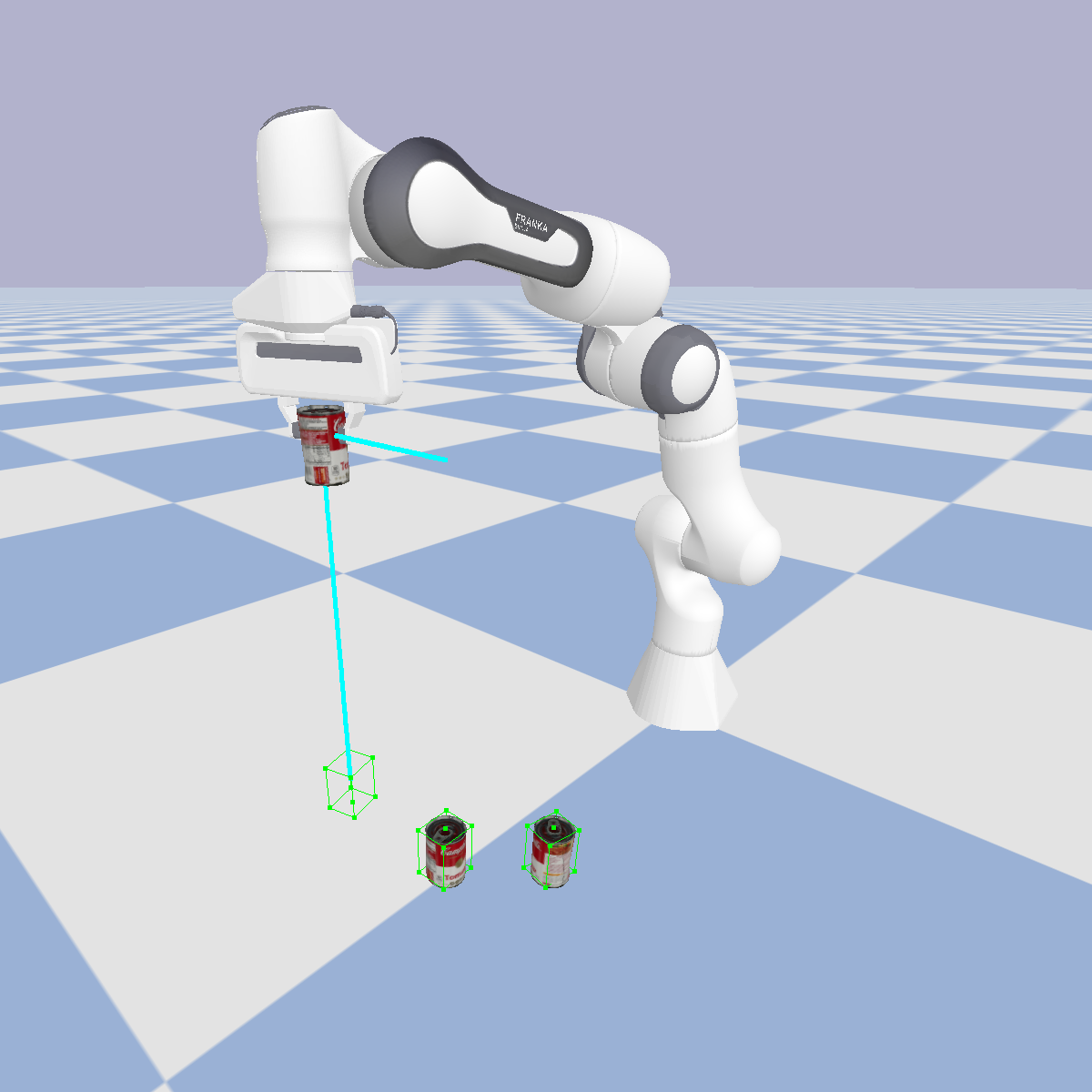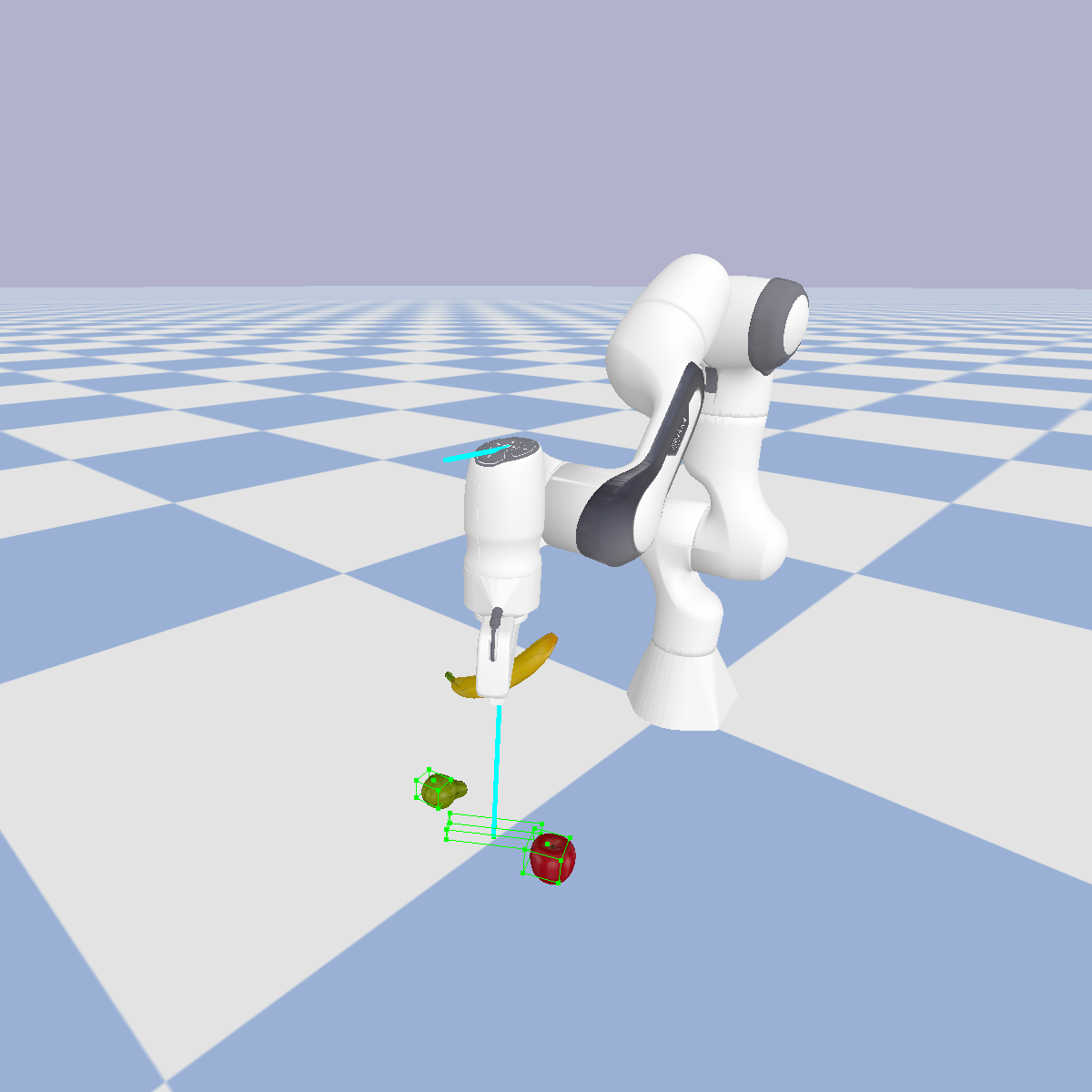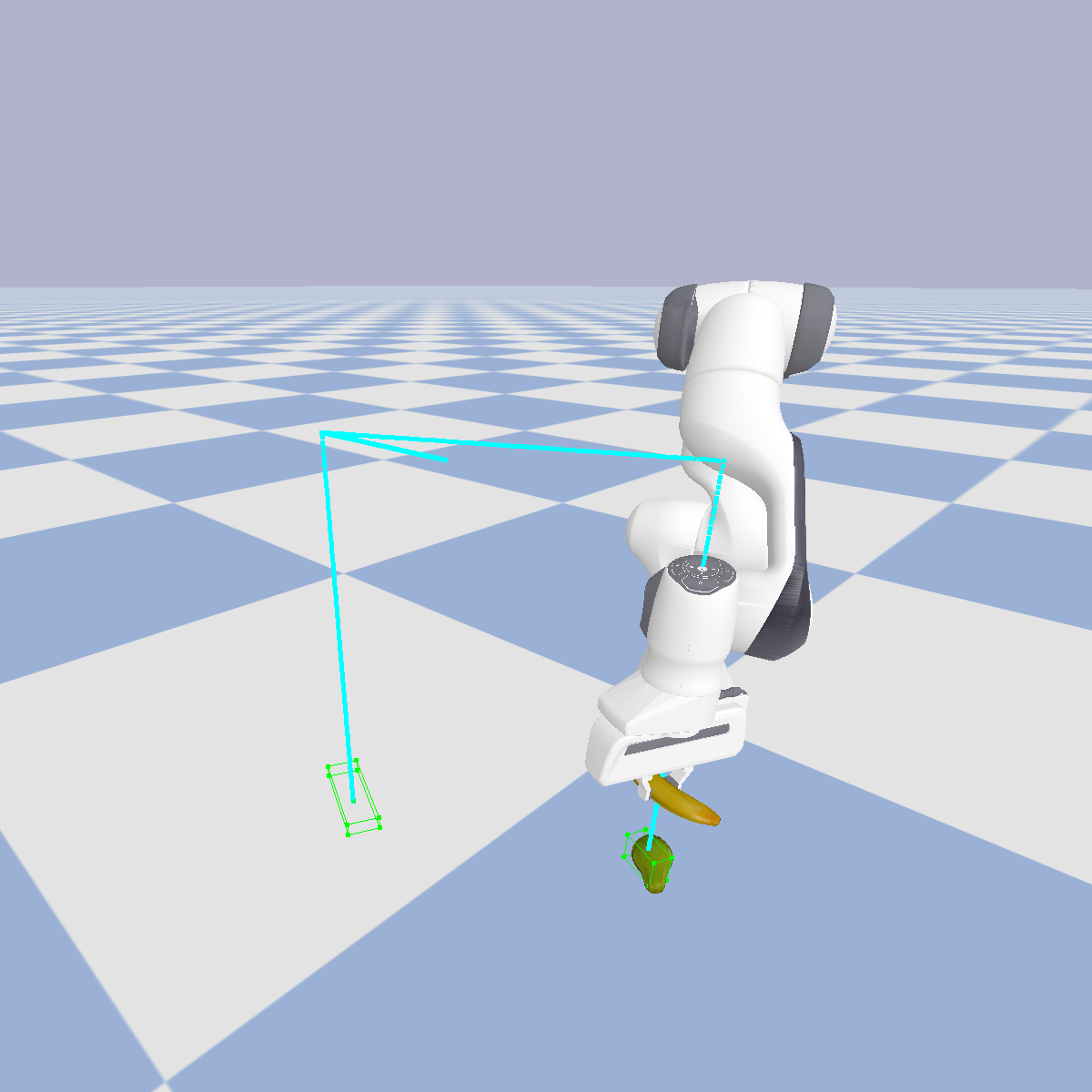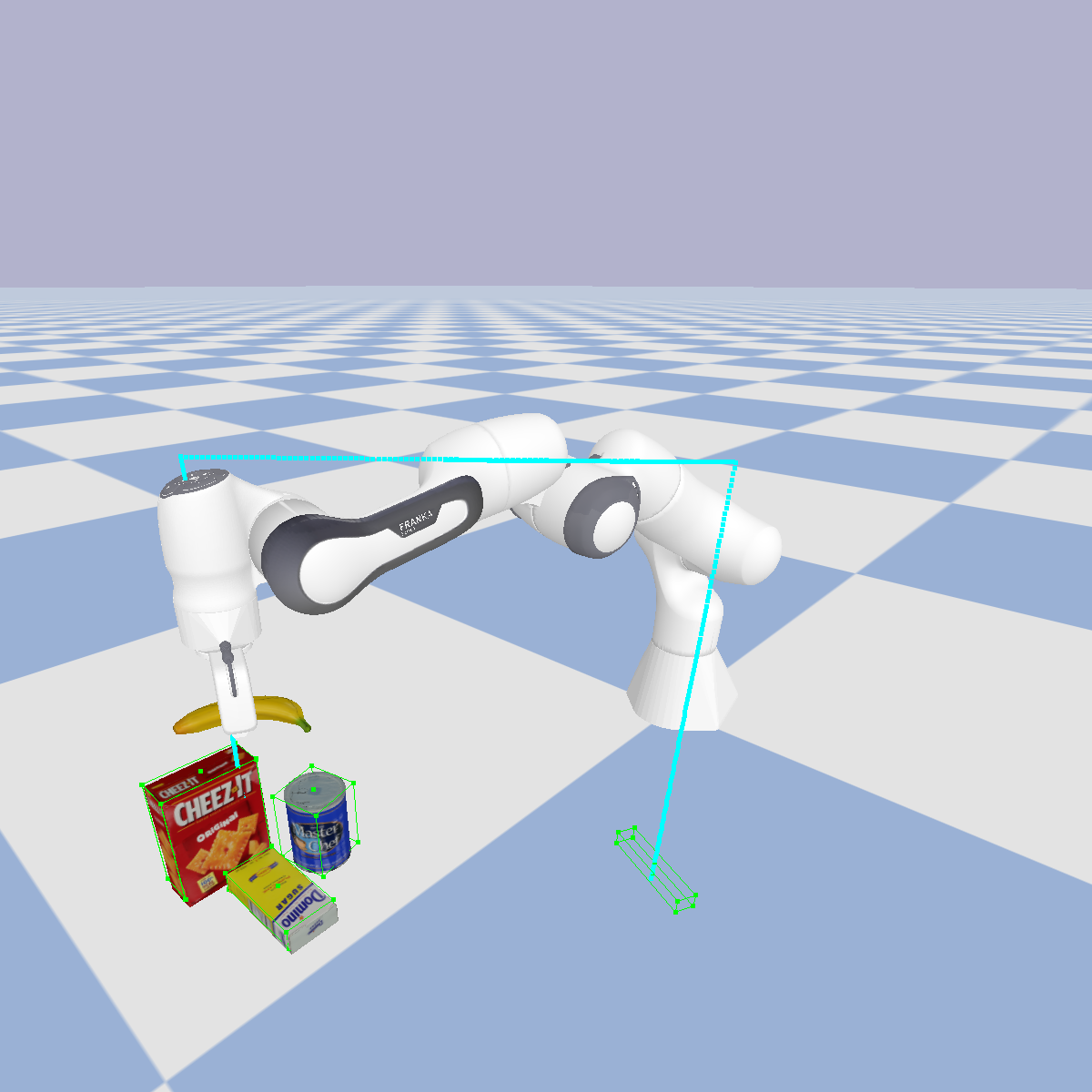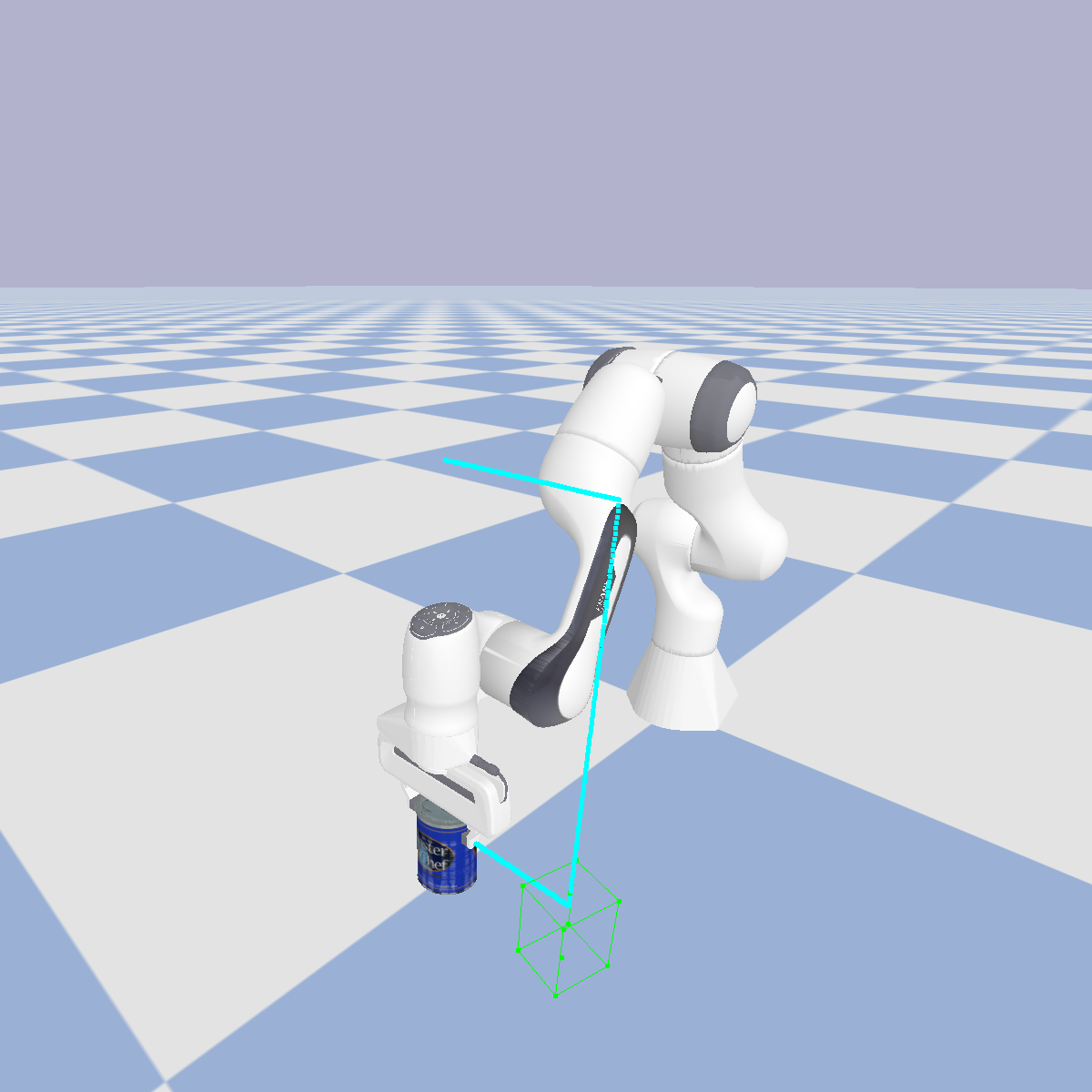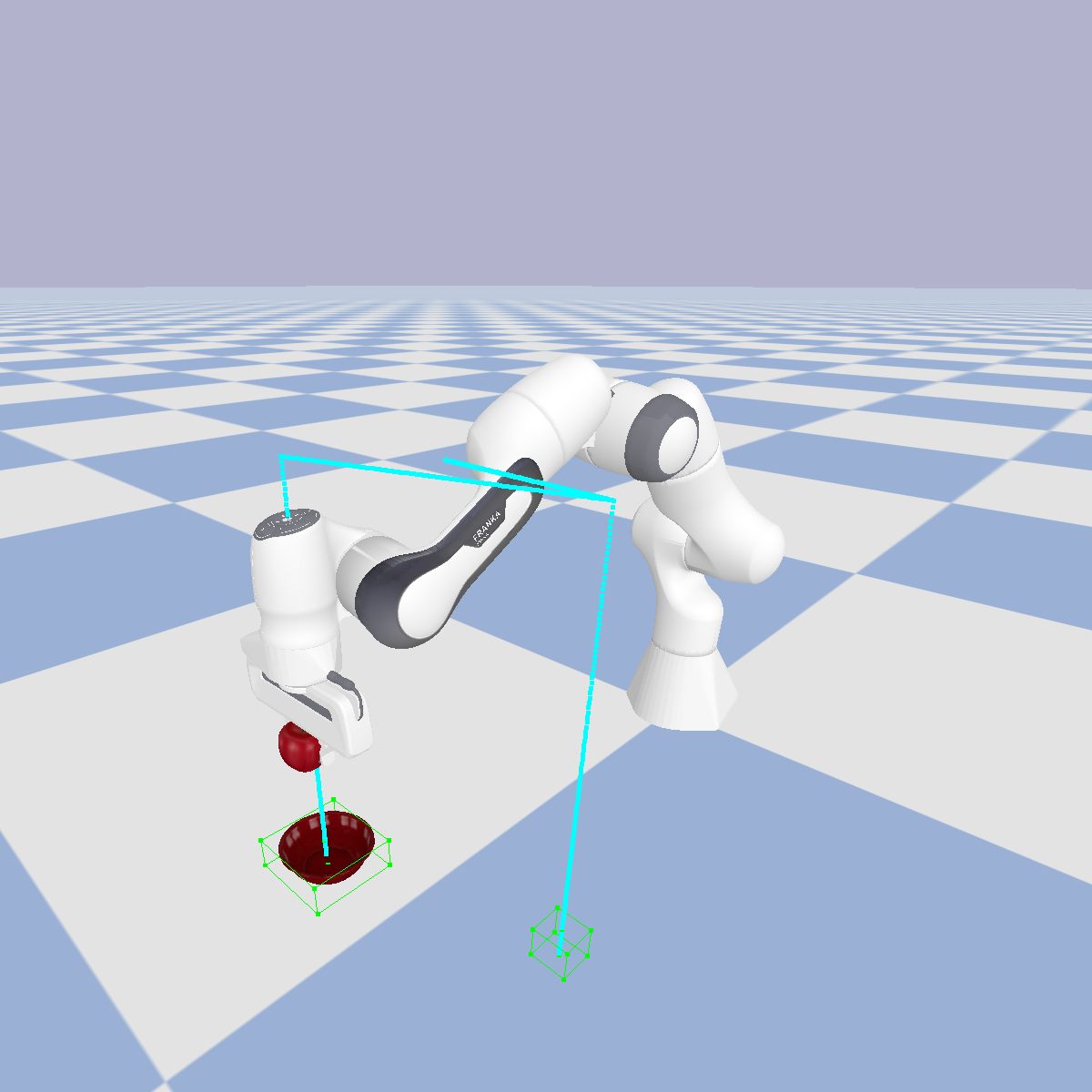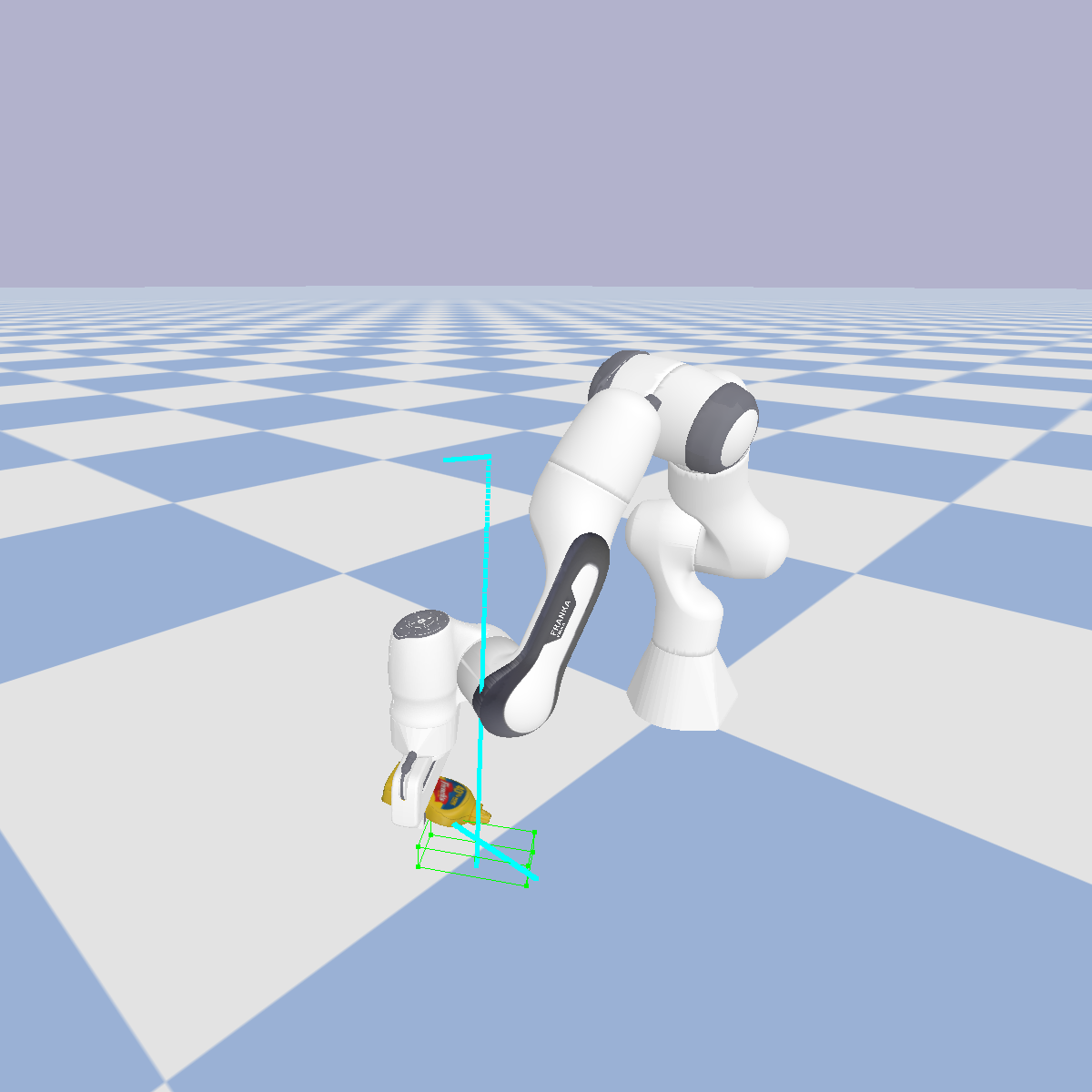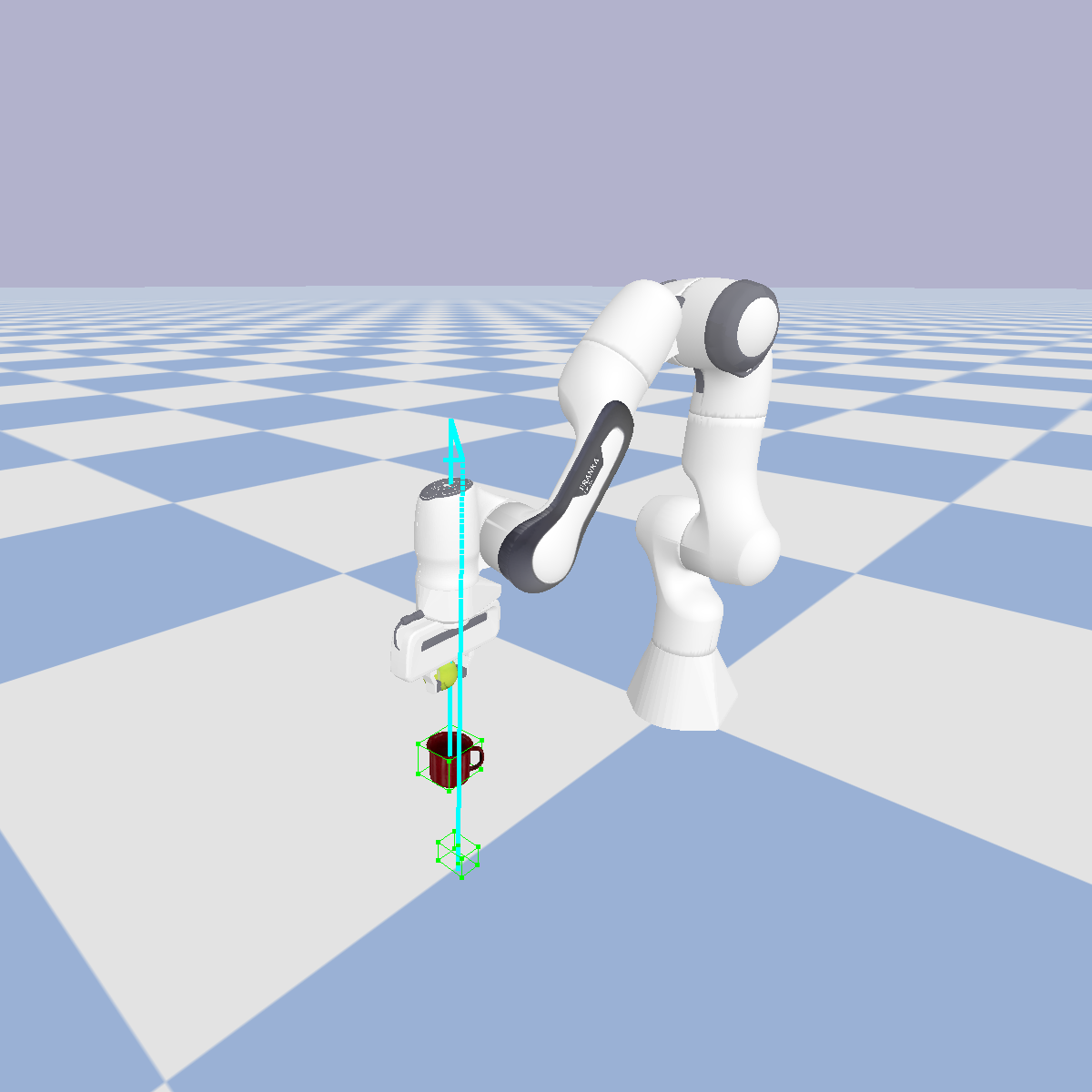The Robot Learning Lab, Department of Computing, Imperial College London
In this work, we investigate if an LLM (GPT-4) can directly predict a dense sequence of end-effector poses for manipulation skills, when given access to only object detection and segmentation vision models, and without any in-context examples, motion primitives, external trajectory optimisers, or robotics-specific training data, with only a single task-agnostic prompt.
This repository contains the code for running the full system in the PyBullet simulation environment. Note that all the experiments for the paper were performed in the real world, and the code has been adapted to run out of the box in the simulator, so that the results of the task-agnostic prompt can be seen quickly and easily. Nonetheless, it should be relatively simple to change the code to run the system on your own robot in simulation or in the real world.
More information on PyBullet can be found here. The GitHub page can be found here. A useful quickstart guide can be found here.
This repository also contains the full prompts, the prompts used for the ablation studies, along with example LLM outputs for a selection of the tasks.
The following commands will install everything required to run the full system in the PyBullet simulation environment. If you would like more information on each command, please refer to the Step-By-Step Installation Guide.
git clone --recurse-submodules https://github.com/kwonathan/language-models-trajectory-generators.git;
cd language-models-trajectory-generators;
pip install -r requirements.txt;
pip install -U git+https://github.com/luca-medeiros/lang-segment-anything.git;
mkdir XMem/saves;
mkdir -p images/trajectory;
wget -P XMem/saves https://github.com/hkchengrex/XMem/releases/download/v1.0/XMem.pth
First, clone the repository with the --recurse-submodules flag to initialise the XMem submodule:
git clone --recurse-submodules https://github.com/kwonathan/language-models-trajectory-generators.git
The XMem object tracking model will be used at the end of each task execution for success detection, by obtaining the poses of the relevant objects over the duration of the task execution and providing them to the LLM to determine whether the task was completed successfully or not.
Once the repository has been cloned, navigate to the project directory:
cd language-models-trajectory-generators
Next, we need to install the required packages:
pip install -r requirements.txt
Then, we need to install the LangSAM model:
pip install -U git+https://github.com/luca-medeiros/lang-segment-anything.git
LangSAM is a language-conditioned object segmentation model based on Grounding DINO and Segment Anything. It will be used to detect and segment objects to obtain bounding boxes and provide object poses to the LLM. Note that this is all performed automatically, and no human intervention is required.
Several directories also need to be created. First, create the XMem/saves directory for the XMem model:
mkdir XMem/saves
Then, create the images and images/trajectory directories:
mkdir -p images/trajectory
The images generated from running the system will be saved in these directories.
Finally, download the XMem model into the XMem/saves directory:
wget -P XMem/saves https://github.com/hkchengrex/XMem/releases/download/v1.0/XMem.pth
Before running the code, make sure to set your OpenAI API key as an environment variable, or manually set the openai.api_key in main.py:
openai.api_key = os.getenv("OPENAI_API_KEY")The following command will start the PyBullet simulator to run the system:
python main.py --robot franka
The available arguments and their options are as follows:
--language_modelor-lm: select the language model fromgpt-4,gpt-4-32k,gpt-3.5-turbo, orgpt-3.5-turbo-16k; default isgpt-4.gpt-4performs better thangpt-3.5-turbo, andgpt-4-32kwith the longer context length seems to be available only to a small group of beta testers.--robotor-r: select the robot fromsawyer, orfranka; default issawyer. Currently, this repository only contains the code to run the system on thefrankarobot. This will be updated with support for thesawyerrobot in the future.--modeor-m: select the mode to run fromdefault, ordebug; default isdefault. Thedebugmode will start the PyBullet simulator with various debug windows which may be useful for visualisation.
Once the system and the models have been loaded upon starting the simulator, you will see the following prompt:
Enter a command:
Here, enter a command such as pick the fruit in the middle, or place the apple in the bowl.
Thereafter, no further human input is required.
After task execution, if the task was completed successfully, you will be able to enter another command. Note that this may result in exceeding the context length limit, as the new command is appended to the previous outputs of the LLM.
Currently, this repository only contains the code to run the system on the Franka Panda robot. However, the system is robot-agnostic, and you should be able to run it with any other robot arm you load in the simulator.
The Sawyer robot with the 2F-85 Robotiq gripper as used for the experiments in the paper will be added soon.
The Sawyer robot was cloned from here. The Franka Panda robot was cloned from here.
Other robots can be loaded in robot.py as follows:
self.id = p.loadURDF("path/to/robot.urdf", self.base_start_position, self.base_start_orientation_q, useFixedBase=True)Be sure to set the other attributes in the Robot class.
Currently, there are 5 objects in the repository available to load in the simulator. These objects are YCB objects, but PyBullet should support any URDF object files to be loaded in the simulation environment. If you would like to download more YCB objects, please refer to this repository, where you will be able to download the entire YCB object model set or build a subset of the object model set from scratch.
Make sure to have both the URDF files and the object asset files in the repository for the objects to load properly.
By default, the 002_master_chef_can will be loaded in the environment.
If you would like to load more objects in the environment, you can modify the config.py file to define the object poses (see the object_start_position and object_start_orientation_e variables for the 002_master_chef_can as an example). So, in the config.py file, you can add the following:
# In the config.py file:
object2_start_position = [0.1, 0.5, 0.2]
object2_start_orientation_e = [0.0, 0.0, 0.0]The objects are then loaded in the Environment class in the env.py file, using the loadURDF function. So, in the env.py file, you can add the following:
# In the env.py file:
object2_start_position = config.object2_start_position
object2_start_orientation_q = p.getQuaternionFromEuler(config.object2_start_orientation_e)
object2_model = p.loadURDF("ycb_assets/003_cracker_box.urdf", object2_start_position, object2_start_orientation_q, useFixedBase=False, globalScaling=config.global_scaling)The full system will run in two processes, so that both planning and execution can be performed simultaneously for faster task completion, and so that it is possible to interact with the simulation environment during LLM inference.
Firstly, the main process (MainProcess) will handle the main logic of the system, such as calling the LLM to predict the trajectory of end-effector poses, and calculating the poses of the relevant objects to provide to the LLM to determine whether the task was completed successfully or not. It will also execute available robot-agnostic API functions such as detect_object and execute_trajectory, and if they require interaction with the simulation environment, the relevant data will be exchanged with the environment process.
The environment process (EnvProcess) will handle the different events called by the main process in the simulation environment. These include actuating the gripper, executing a trajectory in the environment, or capturing images for object detection or task success detection.
Further, it should facilitate adapting this codebase to allow the system to run on a real robot, as the api.py and main.py files can be kept largely the same, and only the env.py and robot.py files would need to be changed for use in the real world.
Please consider citing our work if you found it useful!
@misc{kwon2023language,
title={Language Models as Zero-Shot Trajectory Generators},
author={Teyun Kwon and Norman Di Palo and Edward Johns},
year={2023},
eprint={2310.11604},
archivePrefix={arXiv},
primaryClass={cs.RO}
}